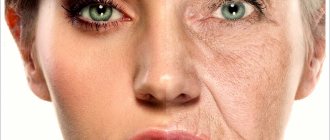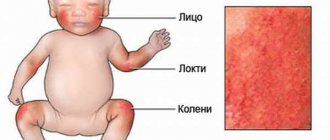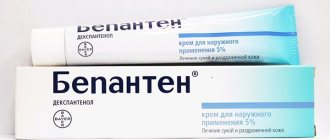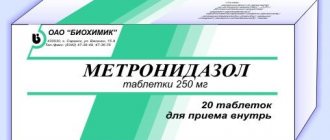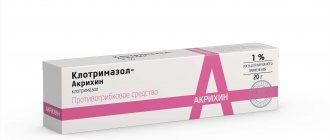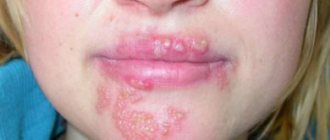Facial hives are a common and annoying condition. It is characterized by the appearance of itchy reddish blisters, reminiscent of nettle burns, with pronounced borders and varying sizes. More often, a rash is the body’s reaction to one or another external irritant; it occurs in both adults and newborns and causes many unpleasant moments for those who are ill.
The disease can occur in two forms (acute and chronic), and its therapy takes from several days to many months.
As a rule, urticaria appears on the face due to:
- allergies to food, medications, pollen, pet dander, cosmetics and detergents (urticaria in an infant can be caused by food that the mother ate);
- increased sensitivity of the skin to heat, cold or sunlight.
Therapy
Treatment of urticaria on the face, both in adults and in infants, first of all involves avoiding contact with the allergen, regardless of what it is. Then the patient may be prescribed:
- antihistamines that eliminate the symptoms of the disease;
- sorbents that absorb toxins and remove them from the body along with feces - activated carbon, Enterosgel, Filtrum, Polysorb, Smecta (these drugs can be used by both adults and children, but before taking them you should read the instructions);
- antipruritic external agents.
Drinking large quantities (about 2.5-3 liters per day) of regular drinking or mineral still water, as well as following a special hypoallergenic diet, can help speed up recovery.
If you have chronic urticaria, this diet should be followed throughout your life.
Antihistamines
Antihistamines are drugs that help to quickly get rid of all signs of the disease. Today there are 4 generations of such drugs.
First generation medications (Diphenhydramine, Tavegil, Suprastin) are taken up to 6 times a day and cause lethargy and drowsiness. The following drugs (Erius, Zyrtec, Telfast, Claritin, Fenistil) are used once and have virtually no negative effect on the body.
Antipruritic drugs
Itching is an integral part of hives on the face. To help get rid of it:
- creams or gels containing fenistil;
- hormonal drugs that relieve itching and have both an excellent healing effect and many side effects and contraindications.
Allergic causes of urticaria
In most cases, urticaria appears as a result of exposure to allergens on the body. This reaction may be due to a food allergy. It is very common among young children whose immune systems are quite weak. In adults, this disease occurs as a result of poor nutrition, consumption of various semi-finished products and fast foods. The following foods can be considered as culprits for hives on the face:
|
|
|
Urticaria on the face occurs due to exacerbation of hay fever. Hay fever is caused by pollen from wind-pollinated plants. It all starts with the trees blooming, already at the end of March. The last to bloom are weeds such as ragweed and quinoa in the month of September. Skin manifestations of such allergies occur due to untimely treatment.
It is definitely worth mentioning another cause of urticaria, namely sun allergy. In this case, the face is most susceptible to the effects, since it cannot be hidden and you cannot sit in captivity all year round. It can be either seasonal or year-round. Sometimes, such a reaction can be considered normal, provided that it disappears within a couple of hours. If the rash does not go away from the face, there is no doubt that it is an allergy.
Due to lack of time, we are accustomed to prescribing some medications on our own, without consulting a doctor. If used incorrectly, the face and body may become covered with red, itchy blisters and hives. Such drugs include antibiotics, hormonal drugs and contraceptives, heart medications, and herbal medicine. Creams and decorative cosmetics should also be chosen carefully, giving preference to hypoallergenic products. Insect bites: wasps, bees, mosquitoes and others can contribute to the manifestation of urticaria.
Hypoallergenic diet
The main goal of a hypoallergenic diet is to exclude from the diet foods that can lead to the development of allergic manifestations. Prohibited foods in this case are:
- fatty fish, caviar, seafood;
- cow's milk and fermented milk products containing flavorings;
- chicken meat and eggs;
- smoked meats and sausages;
- pickled foods and canned food;
- seasonings, ketchups and sauces;
- red vegetables and fruits;
- tangerines, oranges, grapefruits;
- dates, dried apricots, raisins;
- sweets;
- coffee, cocoa and carbonated drinks;
- nuts and honey;
- sorrel;
- celery;
- sauerkraut.
Allowed foods include:
- dairy products;
- lean beef and pork;
- quail meat;
- lean fish;
- offal;
- rice, buckwheat and corn bread;
- green vegetables and fruits;
- oatmeal, rice, buckwheat and pearl barley porridge;
- butter and vegetable oils;
- prunes and dried apples;
- mineral still water;
- apple and pear compotes, tea, rosehip drinks;
- cracker;
- unhealthy bread.
Preference is given to 5-6 meals a day, which excludes overeating, which increases the load on the digestive tract and increases the risk of incomplete breakdown of nutrients. It is advisable to steam or boil food.
The appearance of urticaria against the background of pseudoallergic reactions
The causes of urticaria on the face can be different, the most common are the following:
- Food products. The most allergenic are citrus fruits, chicken eggs, chocolate, seasonings and spices, and alcohol. A reaction in the form of a rash may occur to a certain dye or food additive contained in the product.
- Low and high temperatures. A skin rash can be triggered by extreme cold, heat or hot steam in a bathhouse or sauna.
- Ultraviolet radiation. It has been established that urticaria on the face can begin after sunbathing in direct sunlight, when receiving sunburn and overheating in the sun.
- Insect bites are also a common cause of allergic skin reactions. Allergies can be triggered by saliva secreted when bitten by mosquitoes, horseflies, gadflies, and bedbugs. There are cases of reactions to the touch of jellyfish.
- Infection. A rash may appear as a consequence of sinusitis or rhinitis. There are known cases of such a reaction to pathologies of the gastrointestinal tract (gastritis, constipation, colitis, helminthic infestations).
- Stressful conditions of a chronic nature - disturbances in the functioning of the nervous system can manifest themselves in the form of a rash on the face.
- Somatic pathologies - dysfunction of the kidneys, liver, endocrine system. Here there is a cause-and-effect relationship between an allergic rash on the face and an organism weakened due to illness.
- Cosmetics, household chemicals. Moreover, contact with the allergen does not have to be direct; sometimes it is enough to inhale the smell of a certain chemical to get a reaction in the form of hives.
- Medicines also quite often cause allergic rashes on the face.
We suggest you read What does it mean if your chin itches?
|
|
|
Urticaria on the face occurs due to exacerbation of hay fever. Hay fever is caused by pollen from wind-pollinated plants. It all starts with the trees blooming, already at the end of March. The last to bloom are weeds such as ragweed and quinoa in the month of September. Skin manifestations of such allergies occur due to untimely treatment.
It is definitely worth mentioning another cause of urticaria, namely sun allergy. In this case, the face is most susceptible to the effects, since it cannot be hidden and you cannot sit in captivity all year round. It can be either seasonal or year-round. Sometimes, such a reaction can be considered normal, provided that it disappears within a couple of hours. If the rash does not go away from the face, there is no doubt that it is an allergy.
Due to lack of time, we are accustomed to prescribing some medications on our own, without consulting a doctor. If used incorrectly, the face and body may become covered with red, itchy blisters and hives. Such drugs include antibiotics, hormonal drugs and contraceptives, heart medications, and herbal medicine.
This manifestation of skin rash is less studied and occurs less frequently than with allergies. It develops against the background of the presence of helminths and some other parasites in the body. People suffering from autoimmune, infectious and viral diseases are at risk. Pseudoallergic urticaria can appear when the skin is exposed to cold. As a rule, after warming up, the rash goes away within an hour.
Doctors often have to observe urticaria that arises from nervousness. Finding yourself in frequent stressful situations, troubles, or simply from lack of confidence in yourself and your strengths, the human body gives such a reaction. This is especially true for children. With strong excitement and anxiety, the skin on the child’s face may turn red.
It is worth mentioning mechanical urticaria. When the skin is pressed for a long time, reactions may occur. Let us note the fact that the rash occurs not only at the site of mechanical impact, but can also spread to other parts of the body: face, limbs, abdomen. Examples of compression include tight shoes, clothing, tight belts, and physical trauma.
In infancy, introducing complementary foods too early can provoke hives on the baby’s face. His body is simply not yet ready for new stress and reacts this way. Therefore, mothers need to delay this event as much as possible, giving preference to breastfeeding.
When emergency help is required
Despite the fact that most often urticaria on the face disappears without a trace after some time, sometimes there is a sharp deterioration in the course of the disease. The rash spreads throughout the body, including the mucous membranes, which can result in swelling of the larynx and death from suffocation. This condition is called Quincke's edema and is a pathology that requires immediate treatment.
Attention! If symptoms such as numbness and swelling of the tongue and lips, hoarseness and difficulty breathing appear, you should immediately call an ambulance, avoid contact with the allergen and take any antihistamine.
The main causes of urticaria
- a true allergic reaction (hypersensitivity to any antigen, for example, to pollen, cat hair, a drug);
- a pseudo-allergic reaction that occurs only when the body is oversaturated with an allergen (food, cold, ultraviolet radiation);
- contact allergy (appears only upon contact with an irritant);
- infection;
— autoimmune processes;
— digestive problems (constipation, gastritis, colitis);
- hormonal disorders;
- nervous disorders.
Urticaria on the face in a child under 3 years of age is usually associated with food. The most common reaction is to citrus fruits, strawberries, pineapples, tomatoes, chocolate, chicken eggs, seafood, as well as food additives and spices.
There are acute and chronic forms of the disease.
Acute urticaria lasts from several hours to a couple of weeks. If during this time the disease does not go away, then it makes sense to talk about a chronic process. It is quite rare in children; urticaria on the face in adults sometimes returns again and again for many years. After all, the human body is an integral system in which all processes are interconnected; it is enough for some people to get nervous for increased production of histamine and serotonin to begin, leading to the appearance of redness, rashes, and blisters.
www.naturalmask.ru
How to prevent disease
Prevention of urticaria on the face includes the following measures:
- exclusion of foods that can lead to the development of allergies;
- avoiding prolonged exposure to heat, cold and sunlight;
- replacing household detergents with laundry soap, soda, or those marked “hypoallergenic”;
- timely treatment of diseases that can cause rashes;
- dosed use of decorative and any other cosmetics.
Timely and appropriate treatment, eliminating allergens and following the recommendations given by the doctor, allows you to completely cure urticaria on the face.
How does urticaria appear on the face?
|
|
The small rash on the skin is pink. If therapy is not started on time, the spot will increase in size and become red in color. Blisters begin to form, reaching 12-13 centimeters. Merging together, they form a large swelling on the face. Itching and burning may begin, but this is in rare cases.
Quincke's edema is very dangerous. He appears quite quickly and unexpectedly. It develops very rapidly, which is why in literally 10-15 minutes a person becomes unrecognizable. Another danger is that the swelling can change its location to internal organs such as the tongue, palate, throat, larynx. Increasing in size, they prevent air from entering the lungs and lead to asphyxia.
Treatment of urticaria in adults
The following are the causes of urticaria:
- Intolerance to a number of medications, which include antibiotics and narcotic compounds, analgesics and serums;
- Food allergens;
- Insect bites, most often blood-sucking, less often bees or wasps;
- The action of external factors - water and sun, low or high temperatures, irritating materials;
- Toxic drugs and helminth infections, as well as disruption of the endocrine system;
- Negative reaction to chemicals and airborne allergens - pollen and dander, dust and wool, and so on;
- Blood transfusion, organ transplantation, and cancer.
The treatment method is predetermined by the stage and type of urticaria and includes several stages - etiotropic and drug therapy.
Etiotropic treatment
At the stage of etiotropic therapy, doctors determine the allergen itself, the root cause of urticaria, and exclude direct and indirect contact with it; all surfaces and objects with which the patient comes into contact are thoroughly treated.
The patient is prescribed:
- Drink plenty of fluids;
- Taking probiotics and prebiotics: Lactobacterin - available in the form of dry powder in bottles, tablets and suppositories. Cost from 110 to 250 rubles;
- Bifidumbacterin - available in the form of dry powder in bottles and tablets. Cost from 75 to 100 rubles;
- Colibacterin is available in powder form in bottles of 5 doses. The cost of 5 doses is from 200 to 290 rubles;
- Bifiform - for adults is available in capsules containing 10-12 million bacteria. Take the drug – 2 capsules 3 times a day. The average price for 30 capsules is 280 rubles;
- Linex - apply 2 capsules 3 times a day. The average price for 16 capsules is 290 rubles;
- To cleanse the body and normalize the gastrointestinal tract, take sorbents:
- Lactofiltrum is a herbal product that normalizes intestinal function and improves immunity. Price 30 tablets from 200 to 400 rubles;
- Atoxil is a product that removes harmful substances from the body well. Cost from 170 rubles;
- Sorbex is a product that acts as a destroyer of all toxic substances and protects the body. Take three capsules two to three hours before meals or after. Cost from 110 rubles.
Lactobacterin
Bifidumbacterin
Colibacterin Bifiform
Linex
Lactofiltrum
Atoxyl
Sorbex
The next stage involves the direct implementation of systemic drug treatment - this is taking tablets and ointments for external use.
The skin reaction and health status when a disease is detected depend on the individual characteristics of the human body and its sensitivity to the effects of various allergens. Treatment of symptoms is also individual. It all depends on the nature of the impact of the disease and the age of the patient.
It is very important to know what urticaria looks like. Its signs in the form of skin lesions can be found on all parts of the body. In most cases, urticaria is localized on the hands; photos of such manifestations are posted below.
As you can see, inflammation of the skin is quite serious and cannot be invisible. One of the most unpleasant consequences of the disease is when urticaria appears on the face, the photo of which causes horror, especially among the female half of the population.
Substances that come into contact with the skin for a long time. For example, latex gloves, household chemicals.
Food. Many of them can cause the release of histamine, which will lead to allergic symptoms. Most often these are fish dishes, seafood, nuts, eggs, cow's milk.
Insect bites that provoke symptoms of acute urticaria. Their poison leads to the appearance of rashes that can remain on the skin for a long time. Therefore, you should be wary of bees, wasps and hornets.
Various diseases can serve as a trigger, often these are:
- Viral infections: hepatitis, herpes
- Diseases caused by parasites
- Pharyngitis, tonsillitis
- Fungal skin lesions
- Disturbances in the functioning of the intestines and digestive system: gastritis, ulcers
- Hormonal imbalances (pathology can make itself felt after the use of hormonal medications, during ovarian disease)
- Serum sickness
- Cryoglobulinemia
- Rheumatoid arthritis, Lupus erythematosus
- Diseases of the lymphoreticular system
- Problems with the thyroid gland
Physical reasons, the most common of them:
- Effect of frost
- Sun rays
- Water
- Pressure
- Vibration
- Rubbing
- Exercise stress
Important!
All these reasons lead to characteristic skin formations, and health can also significantly deteriorate.
Signs of hives
Many people are interested in how urticaria manifests itself in adults and children, and whether symptoms differ depending on age. Experts say that the disease progresses almost the same for everyone.
The only difference is that children more often have an acute form of the disease. The main symptom is the same for everyone: the sudden formation of a rash and blisters. They are often painful. Redness, itching, and burning are also noted.
The blisters, the appearance of which is characteristic of this disease, are dense, their color can be either white or pink. The shape is oval, ring-shaped or irregular, but with clearly defined edges. Such bubbles disappear as quickly as they appear. They stay on the body for no longer than a day.
It happens that simple redness of the skin may appear as a sign of illness. It often occurs in the form of a frequent rash or interconnected blisters that spread over a large surface of the body. After they are healed, no scars or scars remain.
You can judge what urticaria looks like by its name. After all, she received it because of the strong similarity of her signs of skin damage to irritation after a nettle burn, the appearance of which many have seen on their bodies more than once.
READ MORE: Asthenic depression symptoms and treatment
Additional symptoms that worsen a person’s condition may include:
- Increased body temperature (nettle fever)
- Difficulty breathing (occurs when swelling of the lungs or nasal passages develops)
- Vomiting, diarrhea (if the gastrointestinal tract is affected)
- Joint pain
- General weakness
- Migraine
- A sharp drop in blood pressure
- Quincke's edema is the most dangerous manifestation of the disease
Important!
All these signs require immediate medical attention. Qualified doctors will tell you how to get rid of hives.
To find out how to cure urticaria once and for all, the patient only needs to undergo a thorough examination. It will help the specialist make a thoroughly verified diagnosis, which will allow him to quickly carry out the necessary therapy and develop recommendations, the adherence to which will allow the patient to never encounter this disease again and not to fear for his health.
The main goal in the treatment of this disease is the elimination of the allergen that could trigger its occurrence. Further therapy depends on the form of the disease. When it is acute (appears for the first time and instantly), it is not difficult to treat if immediately after the onset of symptoms, an immediate visit to the doctor follows.
The result of treatment, in this case, will become noticeable within the first two days. In the case of a chronic course of the disease, when the symptoms of urticaria appear in the patient repeatedly over a long period of time, treatment will be lengthy and may take more than two weeks.
If the manifestations are minor and appeared for the first time, then taking activated carbon inside may help. They are able to eliminate traces of the allergen from the body and stop the process of intoxication. In this case, antibiotics are usually not required.
How severe is the form that the urticaria has taken, and how to treat it, the doctor decides immediately after studying blood, stool, urine tests and the results of other necessary studies, for example, x-ray.
The following methods are often used for treatment:
- Medication
- Using folk remedies
- With the prescription of a diet and rules of behavior carefully developed for each individual case
Important!
Any of these methods is effective if chosen correctly, and the maximum effect is achieved by combining all of the above methods.
Drug treatment involves the use of various drugs. So to eliminate acute symptoms use:
- Hyposensitizing drugs (these include antihistamines, calcium chloride and gluconate, activated carbon. They help treat diseases caused by taking medications or eating allergenic foods)
- Corticosteroid drugs and adrenaline help relieve particularly severe manifestations of the disease
- A solution of menthol, calendula, salicylic acid, helps eliminate irritation and discomfort
After identifying an allergen, it is often recommended:
- Hypersensitization (this is a method to reduce the body's sensitivity to an allergen)
- Relieving skin irritation in the form of itching and burning (most often, these manifestations help relieve urticaria pills, for example, Tavegil, Suprastin)
- Sanitate foci of infection (prevention)
- Be examined to identify stomach diseases and, if found, treat them
- Deworming (this is a set of measures aimed at eliminating diseases caused by various parasites, for example, worms)
In addition to this, other means are often used for treatment:
- Ointment for urticaria (to relieve allergic manifestations, they must be hormonal. They must be selected according to the severity of the symptoms and based on the patient’s age)
- Cream (Gistan)
- Drugs that absorb the allergen in the patient’s blood (the most popular and safest of them: activated carbon, Smecta)
- Antibiotics (Hyoxyzone, Tetracycline)
- Gel or paste (for example, Enterosgel. It effectively relieves itching and burning of the skin)
Causes
The main cause of urticaria is allergens, but other factors can also provoke pathology. Based on them, food, medicinal, physical and other types of disease are distinguished. It also depends on the causes of urticaria whether urticaria will occur in acute or chronic form.
Acute
The acute form is urticaria, the symptoms of which last up to 6 weeks. After contact with the irritant, symptoms appear within a few minutes and disappear within 24 hours. Main reasons:
- Food.
- Medicines.
- Insect bites.
- Infections (viruses, bacteria).
Chronic
Chronic urticaria is diagnosed when symptoms of urticaria last longer than 6 weeks or are recurring.
Pathology can be provoked by malfunctions of the thyroid gland, hepatitis, cancer, and stress. Often the causes of chronic urticaria remain unknown.
Physical
The pathology often occurs in a chronic form. Red spots occur in areas that have been exposed to external physical stimuli. They appear within 30 minutes after contact with the irritant and disappear after 2-3 hours. Causes of physical urticaria:
- It's hot, sunny.
- Hot shower or bath.
- Cold water, snow, low temperature.
- Vibration.
- Compression of the skin by stockings, shoes, a bag on the knees or hand.
- Sweat.
- Physical exercise.
- Water.
Dermatography
Sometimes the condition develops in response to mechanical irritation of the skin. This is how dermatography appears - a type of physical urticaria. The pathology is chronic.
A hives rash appears after minimal physical impact.
Blisters appear 10 minutes after irritation, are accompanied by severe itching and quickly disappear. Among the reasons:
- squeezing the skin with clothing;
- scratches;
- friction;
- drawing a picture on the skin (even line drawing).
The use of folk remedies
If urticaria on the face does not respond well to medication, you can resort to folk wisdom. But home treatment should be carried out under the supervision of a doctor, otherwise the problem may only get worse. You can get rid of itching and rashes with:
- herbal compresses;
- nettle infusions;
- ice compresses.
Herbal baths have significant benefits. They can be prepared for both adults and small children.
Warm compresses and decoctions
If a person is severely tormented by itchy skin, then he should make herbal compresses. For compresses, it is recommended to use the herbs thyme, calendula and chamomile. To prepare a compress, you need to brew 100 grams of the healing agent with 1 liter of boiling water. After this, you need to infuse the decoction for two to three hours, moisten the cotton wool and gently wipe the skin. It is advisable to repeat the procedure every 30 minutes.
If urticaria on the skin (face) attacks an adult, then he is recommended to take a nettle decoction daily. It is not difficult to prepare a healing decoction. To do this, you need to grind the nettle, boil it in 1 liter of water and leave for 10 hours.
You should drink the medicine before each meal, 1/2 cup. This remedy helps relieve symptoms and has a beneficial effect on the functioning of the immune system.
Ice packs and baths
When a person experiences hives on the face, ice packs may help. To avoid adverse consequences, it is recommended to use regular ice for this procedure. Frozen vegetables and fruits are not suitable for this, since these products can provoke an allergic reaction.
With hives, not only compresses with pieces of ice help. They can be used to gently wipe the affected areas. Cold promotes vasoconstriction, which ultimately leads to the disappearance of redness.
You can only wipe your face with ice cubes if there are no blisters. If they have already appeared, the procedure will have no effect.
An excellent remedy to get rid of painful symptoms is a bath with plantain. To prepare such a bath, you need to grind 500 g of plantain and pour one liter of boiling water over it. Then the product must be infused in a dry place, inaccessible to sunlight. After filtering the product, it must be added to the bath at the rate of 5-10 g/1 liter.
First steps for urticaria
It happens that strong manifestations of this disease can provoke a serious condition in the patient. You should call an ambulance immediately. In such cases, doctors often have to take the necessary measures directly at the scene of the call in order to prevent irreversible consequences.
If urticaria suddenly appears in a severe form, emergency care should consist of clear actions:
- Immediate exclusion of resumption of interaction with the stimulus, if it is established
- If urticaria develops as a result of an insect bite, apply a tourniquet. It should be tightened slightly above the bite site
- Mezaton or Adrenaline is administered intramuscularly or intravenously, Noradrenaline is also suitable
- When the blood pressure returns to normal, antihistamines are administered.
- Symptomatic treatment is carried out
Important!
If everything is done correctly, the signs of the disease will immediately begin to recede: the patient turns pale, the itching and rash disappear. When this does not happen, the patient is hospitalized.
If urticaria is a manifestation of Quincke's edema, anaphylactic shock or any other dangerous condition, the person needs immediate first aid:
- Call an ambulance as quickly as possible (the patient turned red and began to choke).
- Provide oxygen access to the respiratory tract. Lay the person horizontally and straighten the neck. Make sure there is no chewing gum or anything else in your mouth that could block your airways.
- Provide blood pressure support by placing the patient in a horizontal position with legs elevated.
- Allergy sufferers usually have the necessary medications with them (a syringe with adrenaline or dexamethasone). Adrenaline is injected intramuscularly into the upper third of the thigh. If it is not possible to give an injection, just wait for the ambulance to arrive.
READ MORE: Sosnovy Bor Ekaterinburg neurosis clinic prices treatment
First aid, diagnosis and treatment of the disease
|
|
|
During flowering periods, try to be outside less in dry, hot weather. Upon arrival home, immediately change into clean clothes and take a shower, wash thoroughly and clear your throat and nasal cavity. Use decorative cosmetics and non-hypoallergenic creams as little as possible - they are often the cause of rashes on the face. Keep your home clean and try to minimize contact with animals.



